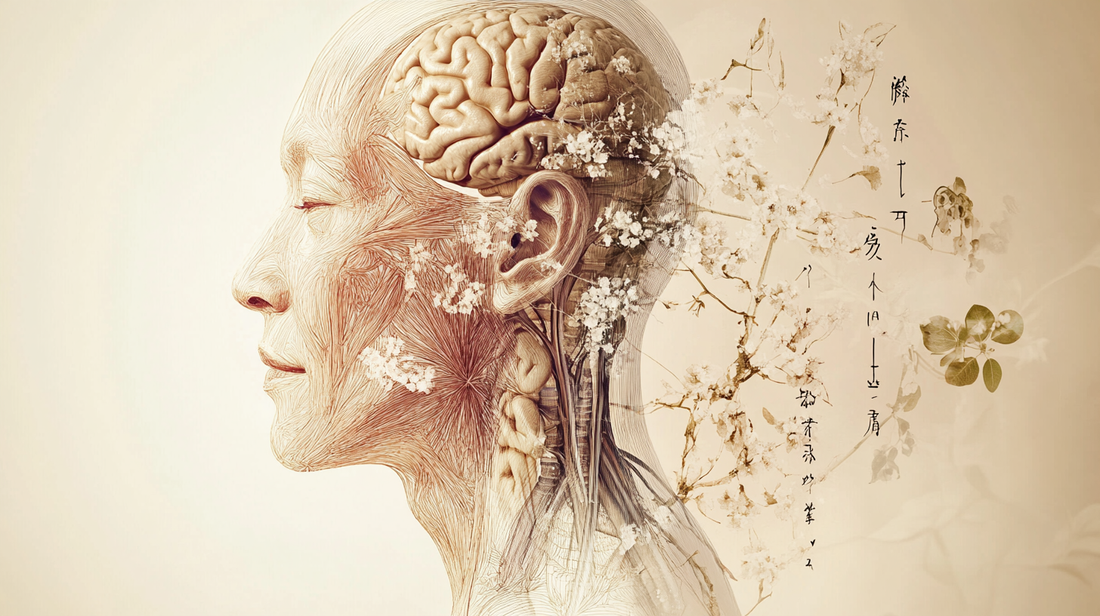
Why Fascia Matters in Pain and Skin Ageing
Share
Introduction
Fascia is one of the most overlooked systems in the body—yet it plays a major role in how we move, feel, and age. This thin, fibrous connective tissue wraps around every muscle, bone, organ, and nerve. It's responsible for structural support, mobility, fluid flow, and even skin tone. But when fascia becomes tight, dehydrated, or restricted, it can lead to chronic pain, postural issues, and visible signs of skin ageing.
At Vital Duo, fascia is at the heart of our therapeutic approach—especially in acupuncture, facial rejuvenation, and pain relief treatments. In this blog, we'll explore the latest science on fascia, how it connects pain and skin ageing, and what therapies help restore its function.
What Is Fascia?
The Body’s Connective Matrix
Fascia is a continuous web of collagen and elastin fibres that forms a three-dimensional matrix throughout the body. It:
- Supports muscles and organs
- Transmits force and absorbs shock
- Enables flexibility and glide between tissues
- Contains mechanoreceptors that influence posture and proprioception
“Fascia is a sensory, structural, and functional network—it’s a full-body communication system.” — Journal of Bodywork & Movement Therapies, 2020
Healthy fascia is elastic, hydrated, and responsive. But injury, inflammation, repetitive strain, or stress can cause fascia to become thickened, stuck, or pain-sensitive.
How Fascia Affects Pain
1. Myofascial Restrictions
When fascia tightens around muscles or joints, it can:
- Compress nerves
- Limit range of motion
- Cause trigger points (knots)
- Refer pain to other areas
This is often misdiagnosed as tendonitis, joint dysfunction, or nerve entrapment.
2. Fascia and the Nervous System
Fascia is rich in sensory nerve endings, including:
- Nociceptors (pain receptors)
- Proprioceptors (movement sensors)
Studies show that fascia communicates directly with the central nervous system, meaning fascial tension can heighten pain perception, especially during stress or poor sleep.
“Chronic pain is not just in the muscle—it’s in the fascial interface that modulates nerve signals.” — Fascial Research Congress, 2021
How Fascia Influences Skin Ageing
1. Structural Support for Skin
Fascia underlies and connects to the hypodermis and dermis, giving shape to facial contours and volume. As fascia weakens or stiffens:
- Skin may sag or crease
- Jawline and cheeks lose definition
- Puffiness and asymmetry increase
2. Circulation and Detoxification
Fascia affects:
- Lymphatic flow: key for reducing puffiness
- Microcirculation: delivers nutrients to skin
- Tissue hydration: maintains skin plumpness
When fascia becomes dehydrated or blocked, it affects the skin’s glow, firmness, and healing ability.
“Fascial dehydration and adhesions contribute to dullness and visible ageing in the skin.” — Journal of Cosmetic Dermatology, 2022
3. Stress Storage and Facial Tension
Emotions like anger, worry, and fear are often held in:
- The jaw (masseter, temporalis)
- The brow and glabella
- The neck and shoulders
This chronic tension shortens the fascia and compresses surrounding skin, leading to expression lines and fatigue in facial muscles.
How We Address Fascia at Vital Duo
Fascial Acupuncture
- Targets adhesions in facial and body fascia
- Improves glide between tissue layers
- Releases emotional tension stored in muscle
Harvard Osher Center (2022) found fascial acupuncture regulates both muscle tone and the autonomic nervous system, improving pain and skin tone.
Facial Cupping and Gua Sha
- Increases lymphatic drainage
- Stimulates microcirculation
- Softens adhesions around the jaw, brow, and cheeks
Herbal Therapy
- Formulas to nourish Liver blood, Yin, and fluid metabolism
- Reduces internal inflammation that contributes to fascial stiffness
TCM Movement (Qigong)
- Gentle stretches support fascial hydration and elasticity
- Breathwork calms the nervous system, reducing fascial rigidity
Clinical Case Example
Patient: Female, 45, experiencing lower back pain and dull skin
Diagnosis:
- Liver Qi stagnation
- Fascial adhesions in thoracolumbar fascia and jaw
Treatment Plan:
- Fascial acupuncture + cupping weekly
- Facial gua sha and jade rolling at home
- Herbal formula for stress, blood circulation
Results After 4 Weeks:
- 70% reduction in back pain
- Brighter skin tone and more defined cheekbones
- Less jaw tension, better sleep
Scientific Evidence Supporting Fascia’s Role
- Journal of Anatomy (2002): Fascia connects with acupuncture meridians and influences circulation
- Journal of Pain Research (2021): Fascial therapy reduced pain and improved quality of life in chronic tension patients
- Journal of Cosmetic Dermatology (2022): Fascia-targeted therapy improved facial symmetry and elasticity more than topical skincare alone
Is Fascial Therapy Right for You?
You may benefit from fascia-focused treatment if you:
- Have chronic pain that doesn’t respond to massage or physio
- Experience facial puffiness, sagging, or uneven tone
- Hold emotional tension in your jaw, neck, or shoulders
- Want to improve skin quality from the inside out
Final Thoughts
Fascia is the missing link in both pain therapy and natural aesthetics. It connects your skin, your structure, and your stress. When fascia becomes restricted, your body speaks up—through stiffness, dullness, fatigue, or visible ageing.
By working with fascia through acupuncture, cupping, herbal medicine, and mindful movement, you can restore vitality and resilience to both your body and complexion.
Academic References
- Harvard Osher Center for Integrative Medicine. (2022). Fascial Regulation Through Acupuncture
- Journal of Anatomy. (2002). Connective Tissue Planes and Meridians
- Journal of Pain Research. (2021). Fascial Therapy in Chronic Tension Syndromes
- Journal of Cosmetic Dermatology. (2022). Fascial Elasticity and Skin Ageing
